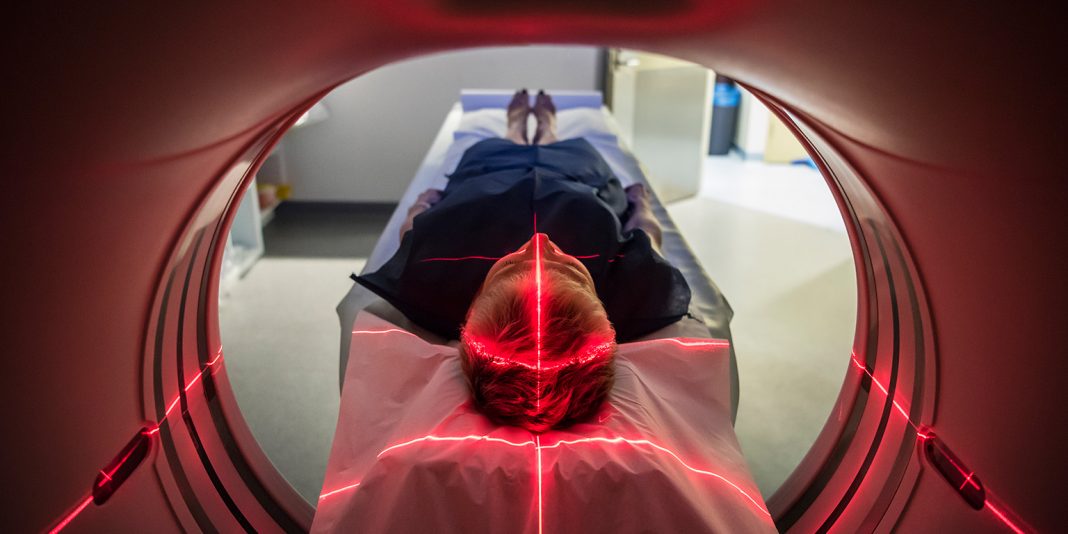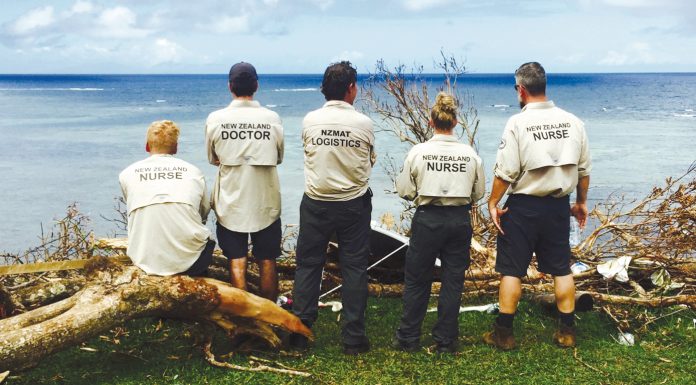Living with chronic pain – stabbing, throbbing, darting, sharply stinging or dully thudding – is a fact of life for many people. While most people experience severe, acute pain some time in their lives – be it toothache, childbirth, a broken limb or when recovering from surgery – for some, pain becomes an unwelcome, long-term companion.
Helping people deal with chronic pain is part of the brief of Waikato pain management nurse practitioner Sue King. Chronic pain is defined as pain that continues to persist beyond the expected time of healing or beyond a three to six month period.
King sees her potential clientele increasing because as the population grows older, more people survive cancer and the burden of long-term conditions like diabetes and heart disease keeps growing, so does the number of people potentially living with chronic pain.
At the other end of the age spectrum, King says chronic pain is also an issue for children and adolescents, with a wide range of causes from scoliosis of the spine to abdominal pain following multiple surgeries for a congenital condition.
Nurses can play a part by recognising that all pain is real, regarding the whole person not just the pain, and helping people identifyand manage acute pain before it becomes a chronic pain issue.
Pain underrated
The numbers living with chronic pain may be growing but King says resources to support them are not keeping up and politically, pain doesn’t garner the same attention as cancer or heart disease. And there are even fewer resources for paediatric pain management than there are for adults.
New Zealand is not alone in this, with the International Association for the Study of Pain saying that there is inadequate access to pain management worldwide. It goes on to say that there is also a failure internationally to recognise chronic pain as a chronic or long-term condition in its own right, requiring management support just like diabetes or heart disease.
The pain may begin as a consequence of classic long-term conditions like diabetes, chronic obstructive pulmonary disease (COPD) and heart disease, or following an injury or surgery. But the research is now showing that if the body faces a persistent barrage of pain signals, then the over-sensitised nervous system can also be affected long-term, so pain can switch from being an acute to a chronic issue needing its own long-term management.
King says persistent pain signals can reprogramme the nervous system so the pain switches from being localised (a classic example being migraine pain) to spreading to other areas of the body. Another example is acute post-surgery pain which, if not controlled appropriately and adequately, will see some people go on to develop chronic post-surgery pain. And the pain initially caused by arthritic inflammation or injury to a joint may sometimes continue as chronic pain, even after the affected knee or hip is replaced.
“So pain is potentially a disease in its own right but it is mostly recognised as an outcome of another condition,” she says.
Seeking explanations for pain
King says some people with chronic pain can find themselves stuck on a conveyor belt of specialist appointments, seeking relief from their debilitating pain.
“They are looking for someone to find an explanation, a cause (of their pain) and a fix for that cause. And often they spend many months, years even, visiting specialists, having repeated investigations and sometimes multiple surgeries.”
The end result may still be that their pain is labelled ‘medically unexplained’ and it is suggested they see a psychiatrist.
“Well, you can imagine how that makes you feel,” says King. She believes the label ‘medically unexplained pain’ says more about the failure of the biomedical approach then the reality of the person’s pain.
“It’s important to emphasise that all pain is real. That’s also why it is important from the outset to work with the person in pain as a whole person and to regard their pain as more than a physical symptom.”
Chronic pain services, such as the service she works for at Waikato District Health Board, are often the end of the line for those who have found no relief from specialists.
Having invested so much in trying to find a cause and solution, King says people are often hugely resistant to being moved away from a “fixing and curing” approach to their pain towards an approach of understanding and self-managing their pain so they can take back some control over their lives.
The multidisciplinary team offers a range of support and tools to help people self-manage chronic pain, including pacing their day so pain doesn’t overwhelm them, learning relaxation skills and slowly reintroducing stretching and exercise into their lives.
“People fight pain. Nobody wants to live with pain – who would! It is potentially quite destructive but people can have meaningful lives and they can get back to work – they might not be able to do the same things they did before they had pain but they can get a life back, which is the important thing,” she says.
“But it takes work and commitment and that’s why it’s important to get people engaged early with chronic pain services – if they have a service in their region –rather than late.”
King emphasises that medication is only a small part of the therapeutic approach to chronic pain, which focuses on reactivation/functional goals and helping people understand the role of thoughts, behaviours and actions in managing pain effectively. “Medicines merely offer a window of opportunity to achieve the functional gains important in self-management.”
Pain from long-term conditions
It is estimated that chronic pain affects one in five people at some time in their life. Ministry of Health surveys indicate that one in four adults have persistent back or neck pain and about one in six have arthritis. That is about one million New Zealanders living with persistent pain.
Complications of poorly managed long-term conditions like diabetes and cardiovascular disease can also lead to chronic pain through ulcers, stroke and diabetic neuropathy.
People who have had diabetes, or poorly controlled blood glucose levels, for a long time are at highest risk of diabetic neuropathy – a form of nerve damage that can cause prickling, tingling, burning, aching or sharp jabs of needle-like pain.
Most commonly, diabetic neuropathy affects the feet and, depending on the type of nerve fibre affected, can lead to weakness or loss of feeling. If diabetes also results in damage to the blood vessels to the feet then people can also face painful legs when walking, pain in their legs and feet at night, and increased risk of pain from foot or leg ulcers that fail to heal. Heart disease can also increase the risk of leg ulcers and pain through circulation and fluid retention problems.
King says neuropathy can be awful as it can be unpredictable, shock-like pain, and one of the hardest to treat effectively. Medications used for neuropathic pain differ from those used for inflammatory pain and can include drug groups like anti-convulsants and tricyclic anti-depressants. She says people with chronic neuropathic pain generally sleep poorly as the pain wakes them up so the tricyclic anti-depressants are used to try and improve the quality of sleeping and also to modulate the experience of the pain.
The anti-convulsants are prescribed to try to settle and calm the nerves down to stop the ‘erratic firing’ that causes the distressing, spontaneous neuropathic pain.
Another group of long-term patients at risk of pain are people with chronic respiratory issues who can face painful breathing and coughing. Long-term steroid use also increases the risk of brittle bones and painful cracked ribs from the constant coughing and spinal fractures.
“Nurses need to be aware of all these potential outcomes of a patient’s chronic condition that can lead to a new acute condition – pain – that needs attention in its own right,” says King.
Dealing with the acute pain as it arises may also prevent the chance of the pain lingering and persisting until it becomes chronic pain.
Pain is the 5th vital sign
Some years ago, American pain specialists were keen to heighten the profile of pain during patient assessment.
“So in order to encourage nurses to include pain as part of their initial assessment,” says King, “they coined the idea of pain as the 5th vital sign.”
She says that while it gained little attention in New Zealand she agrees pain should always be part and parcel of nurse assessment, be it a district nurse dressing a venous leg ulcer or a practice nurse doing a regular blood test for a patient with diabetes.
“Nurses are very good at asking people how they are ‘doing’ in the widest sense of the term and through the answers they get they can drill down and seek further clarity. ‘How are you doing Mr Smith? How are you sleeping? What activities are you up to these days?’ These are all good questions to help ascertain whether pain is interfering in a person’s daily life.”
King says nurses can play a key role in monitoring their regular long-term condition patients to see whether pain is beginning to impact on their quality of life. “Particularly as patients often like talking to nurses rather than their doctor as nurses can be seen as more sympathetic or having more time.”
Of course, a key nursing role remains health education, whether it’s supporting patients to quit smoking or encouraging other lifestyle changes that could help them manage their condition and reduce the risk and impact of pain. Finding out about a patient’s use of analgesics (are they taking something around the clock, or reluctant to take even the occasional paracetamol?) and educating them about appropriate pain management is also important.
And once again, considering the whole person is important, emphasises King. Health professionals need to look at whether ongoing pain is leading to stress in patients’ lives and whether stress in turn is reducing their ability to manage an exacerbation or flare-up of pain.
“People with chronic pain have reduced capacity or reserve to manage stress because their body is already under stress from the pain.”
Pain – is it all in the head?
King says a key part of chronic pain management is managing the head and often retraining the brain. That’s not the same as saying chronic pain is only in the head, but the head is often a major factor in the pain continuing.
“The brain releases chemicals in response to pain because that is its job – it prepares the body for ‘fight or flight’ when a potentially harmful signal of pain comes in.” Unfortunately that protective and helpful mechanism can go awry.
“In people with chronic pain, that mechanism can become unhelpful and pathological because the brain becomes overly alert and people can become hyper-vigilant to signals from their body.”
The resulting chemicals rushing around the body can make them anxious and stressed; their heart rate goes up and they worry about aggravating the pain so get fear-based avoidance behaviour, says King.
“So that’s why it’s important to help people with how they think about pain.”
She says nursing can play a role in helping people examine their thoughts, feelings and behaviours around pain. But nurses also need to be wary of stepping beyond their expertise and be ready to refer to a psychologist or mental health services as some chronic pain sufferers can sink to a very low ebb and there is a risk of self-harm. Other harmful behaviour to watch out for is misuse of prescribed opioid drugs or using alcohol to excess.
King says opioids are best kept for acute pain or cancer pain and should have a limited role in chronic, non-malignant pain. “But unfortunately they are widely prescribed because GPs get desperate as they have tried everything else and it seems to be the natural progression to put people on strong, morphine-like drugs.”
Before they know it, the drug levels are going up with very little benefit or improvement in functionality, which King says is the main function of pain medication – to allow people to function well enough to do the activities they need or want to do. Also with increased doses comes increased risk of falls, inadvertent overdoses, and misuse. So King says the trend is to avoid using opioids for chronic, non-cancer pain unless there is shown to be a clear benefit and the dose can be kept low.
Medication though is always only one part of the answer to managing chronic pain. Getting your head around the role of the head is a major step forward but King says some people will always struggle with understanding the role of the brain in their pain. “You think it’s all in my head,” is a common response.
“And the answer is yes and no, as it is actually in your head – that’s the brain’s job,” says King.
This doesn’t mean the pain isn’t real, but once people accept the brain’s role in the maintenance of chronic pain they can access strategies to help them regain a life and learn how to live with this long-term condition.
Definitions:
Pain
A physical and emotional experience associated with actual or potential tissue damage or described in terms of such damage.
Chronic or persistent pain
Pain that persists beyond the expected time of healing or beyond a three to six-month period.
Useful sources:
Peter’s Pain Toolkit: a 24-page booklet developed for both patients and health care professionals on self-management of persistent or chronic pain. The toolkit and related website are the brainchild of UK-based Peter Moore, who lives with chronic pain, working collaboratively with two GPs (one a pain rehabilitation specialist). www.paintoolkit.org or go directly to download the New Zealand version of Pete’s Pain Toolkit
www.paintoolkit.org/downloads/Pain_Toolkit_New_Zealand_(1).pdf
Pain Management Knowledge and Skills Framework for Registered Nurses (2013): developed to identify and outline the fundamental knowledge and skills that nurses need to care for people with pain from the competent level (for nurses working in any setting) up to the expert nurse working with people with complex pain and health needs. The framework can be downloaded at www.health.govt.nz/our-work/nursing/nurses-new-zealand/knowledge-and-skills-frameworks-nurses
Helpful YouTube videos on chronic pain: check out the animated ‘Brainman’ videos developed by a New South Wales health authority’s integrated pain service.
Understanding pain: what to do about it in less than five minutes?
www.youtube.com/watch?v=4b8oB757DKc
Understanding Pain: Brainman chooses
www.youtube.com/watch?v=jIwn9rC3rOI
Understanding Pain: Brainman stops his opioids
www.youtube.com/watch?v=MI1myFQPdCE
Understanding pain and what’s to be done about it in less than 10 minutes:
(New Zealand version for children and adolescents).
www.youtube.com/watch?v=eJ8THITj_2Y#t=67
Pain Management in Nursing Practice by Shelagh Wright (2014): King strongly recommends this new book for hospital and other nursing libraries.
New Zealand Pain Society: the society is the national organisation that brings together scientists, health professionals and others with an interest in pain research and management and includes a nurses’ interest group (NIG). www.nzps.org.nz
International Association for the Study of Pain: The website has a range of resources, including a link to the Declaration of Montreal that says pain management is inadequate in most of the world and access to pain management should be a fundamental human right. www.iasp-pain.org






















